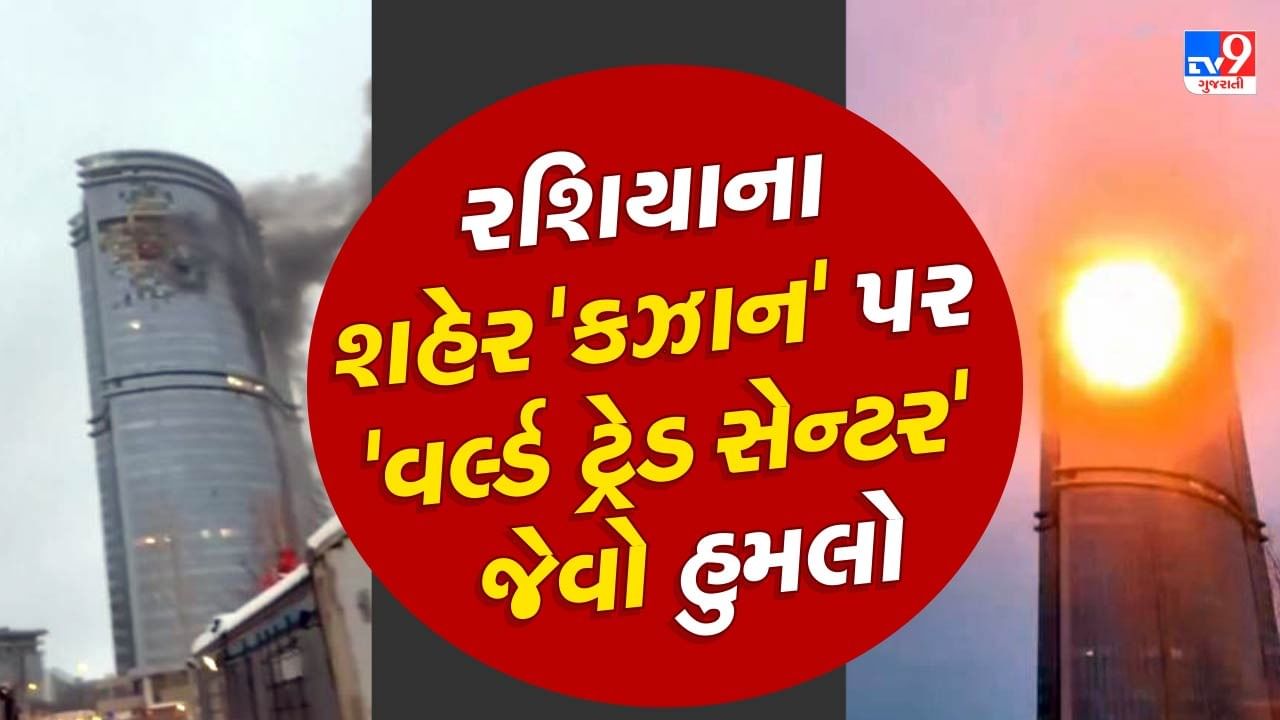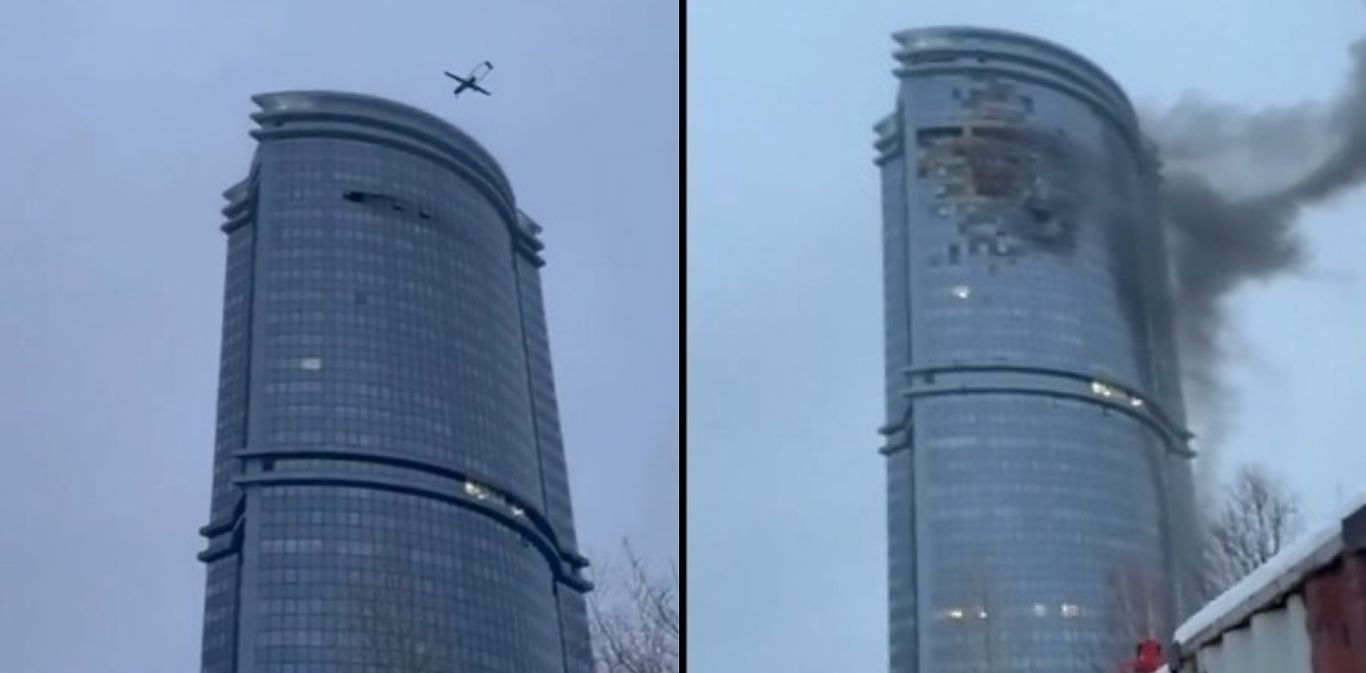Kazan drone attack: The alleged drone incident in Kazan has sparked international concern, raising questions about drone technology, security vulnerabilities, and potential geopolitical implications. This event necessitates a thorough examination of the circumstances surrounding the attack, the technological capabilities involved, the effectiveness of existing security measures, and the potential motives behind the incident. Understanding this event requires analyzing the available evidence, considering various perspectives, and assessing the long-term consequences.
This analysis will delve into the specifics of the reported damage, the timeline of events, and the key players involved. We will explore the types of drones potentially used, their capabilities, and the methods employed in the attack. Furthermore, we will examine the geopolitical implications, the international response, and the potential motives behind the alleged attack, considering various actors and their possible roles.
Finally, we’ll discuss measures to enhance future preparedness and mitigate similar incidents.
The Kazan Drone Attack: An Analysis
The alleged drone attack on Kazan, Russia, represents a significant event with far-reaching implications. This analysis examines the incident, exploring its technological aspects, security vulnerabilities, geopolitical ramifications, and potential long-term consequences.
Event Overview: The Kazan Drone Attack

Reports emerged of a drone attack targeting Kazan, a major city in Russia. The exact circumstances remain unclear, with conflicting accounts from various sources. Initial reports suggested multiple drones were involved, targeting critical infrastructure or government buildings. The extent of damage and casualties, if any, varies depending on the source, ranging from minor property damage to more substantial injuries or fatalities.
A precise timeline is difficult to establish due to the conflicting information, but the event appears to have unfolded rapidly, with initial reports surfacing within a short timeframe.
Key players involved include the alleged perpetrators (whose identity remains unknown at this time), local authorities responding to the incident, and potentially national security agencies investigating the event. The roles of each actor are still under investigation, making definitive statements impossible at this stage.
Drone Technology and Capabilities
Several types of drones could potentially have been used in such an attack. Small, commercially available drones modified for increased payload capacity are a possibility, as are larger, military-grade drones capable of carrying more significant explosive payloads. The operation would require sophisticated technology, including advanced navigation systems for precise targeting, long-range communication links for control, and potentially jamming capabilities to evade detection.
Launching and control methods could range from simple manual operation to more complex autonomous systems using GPS coordinates or pre-programmed flight paths. The suitability of different drone models depends on factors like range, payload capacity, stealth capabilities, and ease of operation. Larger, more sophisticated drones offer greater range and payload but are more easily detected and intercepted.
The recent drone attack on Kazan highlights the increasing vulnerability of civilian areas to unmanned aerial vehicles. This incident underscores the need for robust counter-drone measures, especially considering the potential for similar accidents, such as the one detailed in this report on a drone show accident , which involved a malfunctioning drone swarm. Understanding these failures is crucial to preventing future incidents like the Kazan attack and ensuring public safety.
Security and Defense Measures

Kazan, like other major cities, likely has some security measures in place to counter drone threats. These might include radar systems for detecting drones, electronic warfare capabilities for jamming drone signals, and potentially even physical barriers or nets to prevent drone access to sensitive areas. However, the alleged attack suggests that these measures were either insufficient or were not effectively implemented.
Potential improvements could include enhancing radar systems with improved sensitivity and range, deploying more sophisticated electronic warfare systems, and investing in counter-drone technologies such as drone-detecting and intercepting systems. A hypothetical improved security protocol might involve a multi-layered approach, combining technological solutions with improved intelligence gathering and response protocols.
Geopolitical Implications and International Response

The alleged attack has significant geopolitical implications, potentially escalating tensions and raising concerns about the use of drones in urban warfare. The international community’s response is likely to be varied, with some nations expressing strong condemnation while others might offer more cautious statements. The reaction will likely depend on the perceived motives behind the attack and the identified perpetrators.
The recent drone attack on Kazan highlights the growing concerns surrounding the misuse of unmanned aerial vehicles. This incident, while seemingly isolated, underscores the potential for similar events, prompting reflection on the safety protocols surrounding drone operations. A recent drone show accident serves as a stark reminder of the importance of rigorous safety measures, regardless of the intended purpose.
Ultimately, the Kazan attack reinforces the need for stricter regulations and improved security measures to prevent future incidents involving drones.
| Country/Organization | Official Statement | Actions Taken | Response Type |
|---|---|---|---|
| Russia | [Placeholder for official Russian statement] | [Placeholder for Russian actions, e.g., investigation] | [Placeholder for type of response, e.g., condemnation] |
| NATO | [Placeholder for NATO statement] | [Placeholder for NATO actions] | [Placeholder for type of response] |
| United States | [Placeholder for US statement] | [Placeholder for US actions] | [Placeholder for type of response] |
| United Nations | [Placeholder for UN statement] | [Placeholder for UN actions] | [Placeholder for type of response] |
Public Perception and Media Coverage, Kazan drone attack
Public reaction to the alleged attack is likely to be a mix of fear, anger, and concern. Media coverage will likely vary depending on the outlet’s political leanings and the information available. Some outlets might focus on the potential threat of drone technology, while others might emphasize the geopolitical implications or the human cost of the incident. Different interpretations will shape public opinion and influence international relations.
Potential Motives and Actors
Several motives could be behind the alleged attack. These might include political statements, attempts to destabilize the region, or expressions of opposition to the current government. Potential actors could range from individual activists to organized groups or even state-sponsored actors. Evidence supporting each potential actor is crucial for determining responsibility, and a lack of concrete evidence makes definitive conclusions difficult.
- Motive 1: Political Protest: Strengths: Potential for widespread public support; Weaknesses: Lack of clear evidence linking a specific group to the attack.
- Motive 2: State-sponsored Terrorism: Strengths: Potential for significant impact; Weaknesses: Requires significant resources and planning, leaving a traceable trail.
- Motive 3: Criminal Activity: Strengths: Simpler to execute; Weaknesses: Limited potential for political impact.
Long-Term Consequences and Future Preparedness
The long-term consequences of the incident could include increased security measures, heightened tensions, and a renewed focus on counter-drone technologies. Improved preparedness involves investing in advanced detection and interception systems, enhancing intelligence gathering capabilities, and strengthening international cooperation on counter-drone strategies. Public education campaigns are crucial to raise awareness about the potential threats posed by drones and to promote responsible drone use.
The recent drone attack on Kazan highlights the vulnerability of civilian areas to unmanned aerial vehicles. This incident, unfortunately, isn’t isolated; consider the issues with a similar technology, as seen in the recent orlando drone show malfunction , which underscores the need for robust safety protocols and improved technology to prevent both malicious attacks and accidental mishaps. Such incidents reinforce the urgency for advancements in drone detection and control systems to protect against future Kazan-style attacks.
The Kazan drone attack serves as a stark reminder of the evolving nature of modern warfare and the vulnerability of even seemingly secure locations to sophisticated drone technology. A comprehensive understanding of this incident, including a detailed analysis of the technology used, the security measures in place, and the geopolitical context, is crucial for developing effective countermeasures and enhancing global security.
Future preparedness necessitates international cooperation, technological advancements, and robust public awareness campaigns to address the growing threat of drone attacks.
Expert Answers
What were the immediate consequences of the Kazan drone attack?
Reports varied, but immediate consequences likely included property damage, potential injuries or casualties, and heightened security concerns.
What type of drones are typically used in attacks like this?
The specific type of drone would depend on the attack’s range, payload, and other operational requirements. Potentially, commercially available drones modified for illicit purposes or purpose-built military-grade drones could have been involved.
How did the public in Kazan react to the incident?
Public reaction likely ranged from fear and concern to anger and demands for increased security measures. Specific details would depend on the information released by authorities and media coverage.
What international organizations are involved in investigating the incident?
This would depend on the specifics of the incident and any international treaties or agreements involved. Potentially, organizations such as the UN or relevant regional security bodies could be involved.